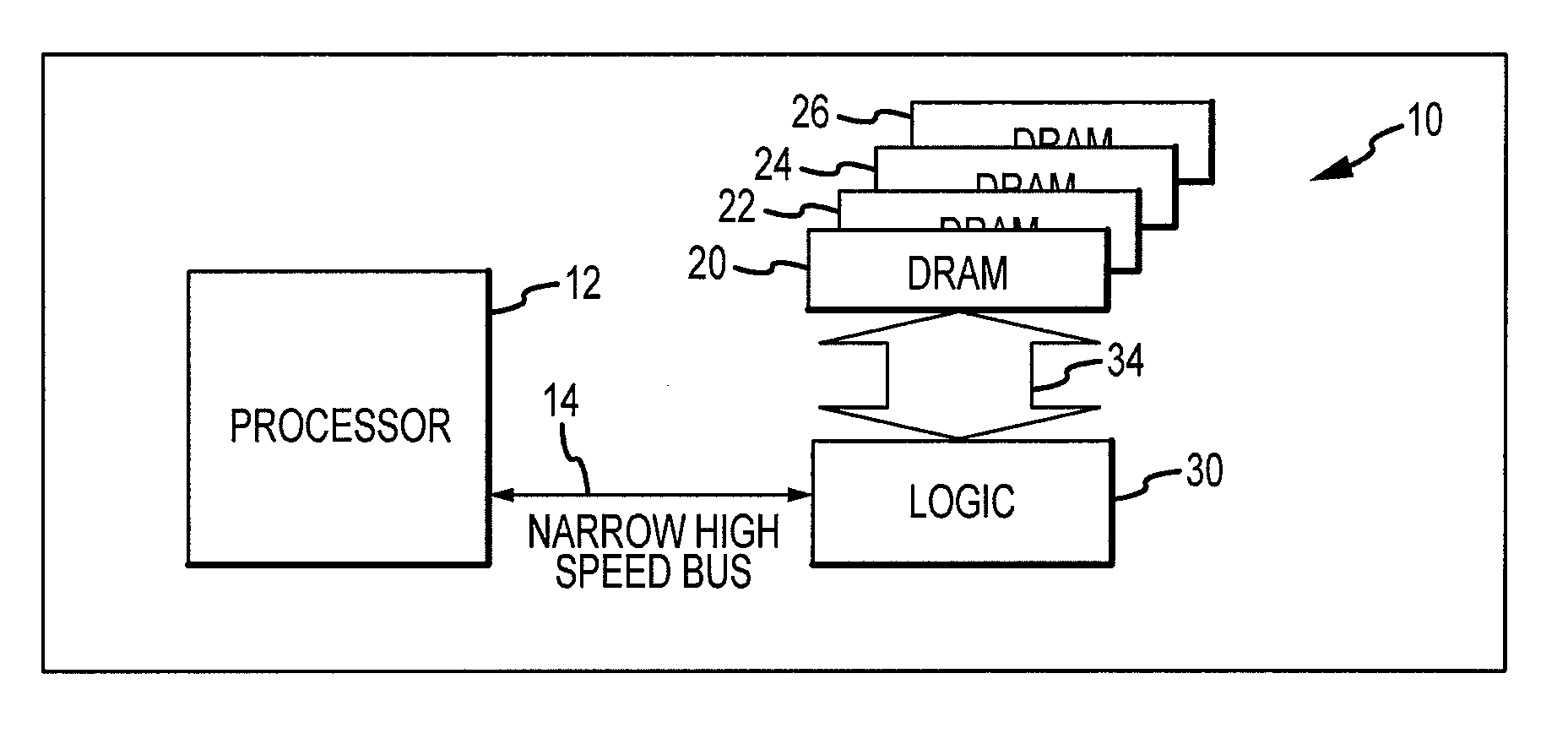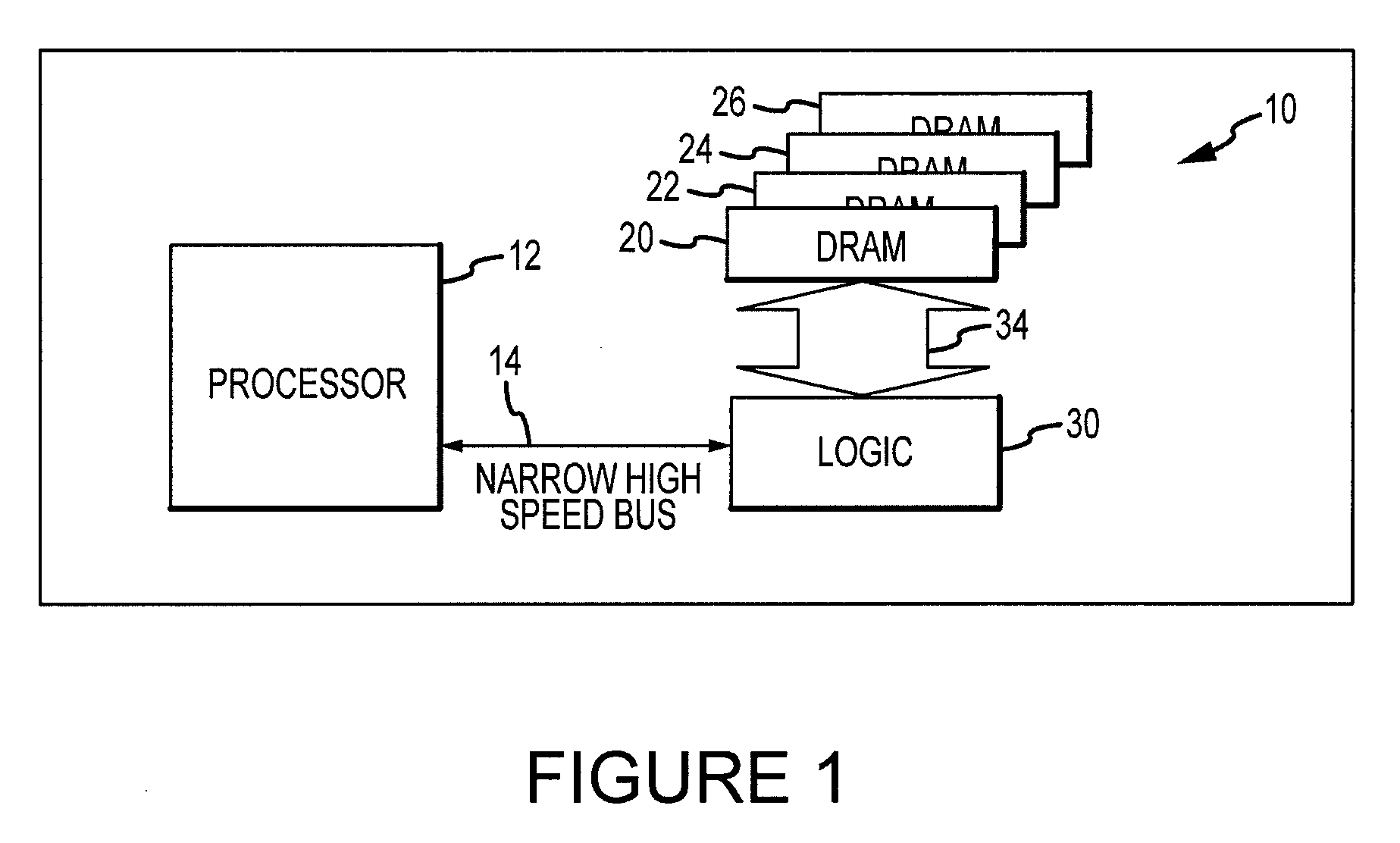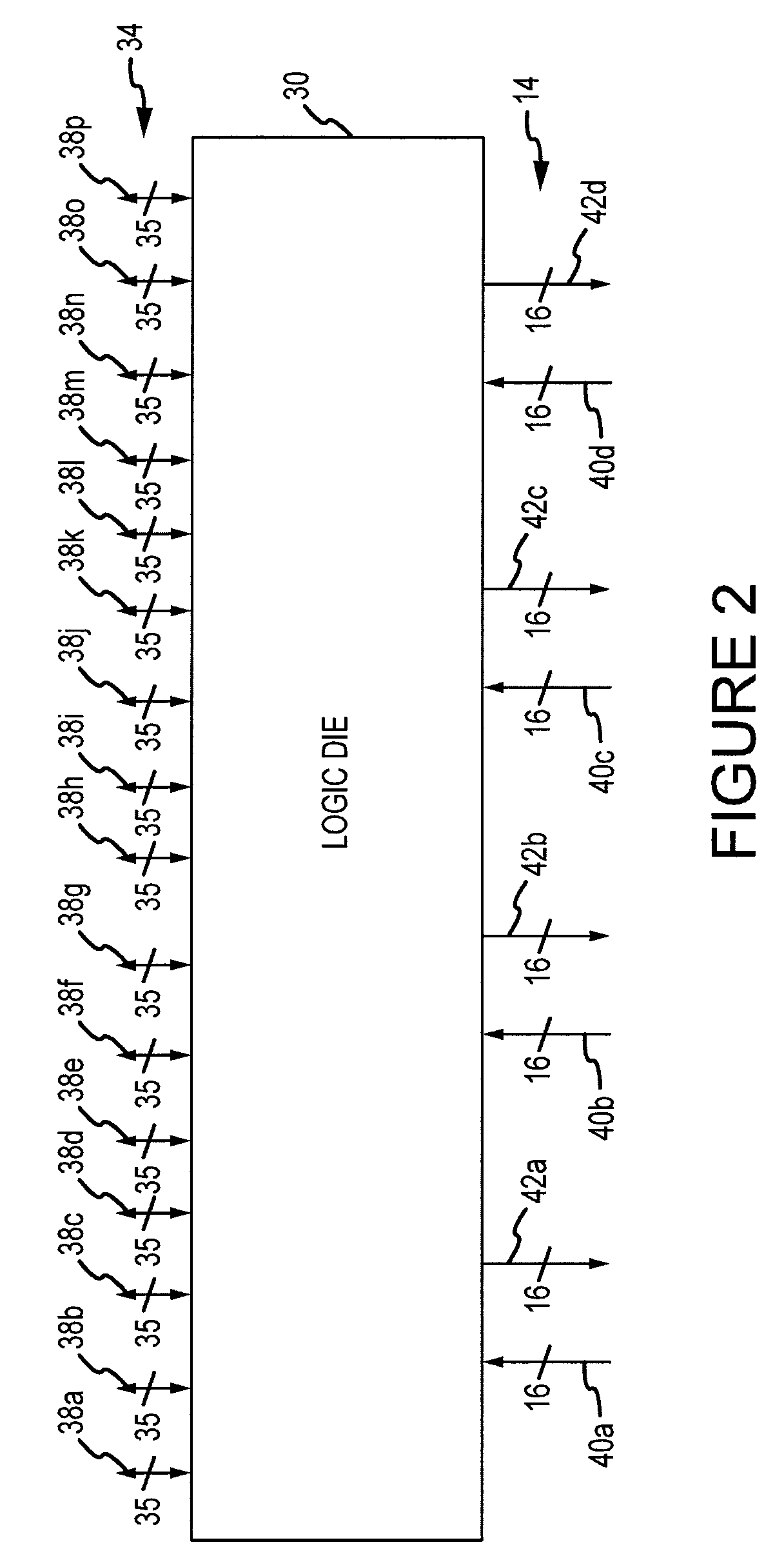Memory system and method using a memory device die stacked with a logic die using data encoding, and system using the memory system
a memory system and logic die technology, applied in the field of memory devices, can solve problems such as idle computer systems, slow computer system performance, and exacerbated problems
- Summary
- Abstract
- Description
- Claims
- Application Information
AI Technical Summary
Benefits of technology
Problems solved by technology
Method used
Image
Examples
Embodiment Construction
[0014]A computer system including a high-capacity, high bandwidth memory system 10 according to an embodiment of the invention is shown in FIG. 1. The memory system 10 is connected to a memory access device, such as a processor 12 through a relatively narrow high-speed bus 14 that is divided into downstream lanes and separate upstream lanes (not shown in FIG. 1). The memory system 10 includes 4 DRAM dice 20, 22, 24, 26, which may be identical to each other, stacked on top of each other. Although the memory system 10 includes 4 DRAM dice 20, 22, 24, 26, other embodiments of the memory device use a greater or lesser number of DRAM dice. The stacked DRAM dice 20, 22, 24, 26 are connected to a logic die 30, which serves as the interface with the processor 12. The logic die 30 can be physically positioned relative to DRAM dice 20, 22, 24, 26 in any order, such as by stacking the DRAM dice 20, 22, 24, 26 on top of the logic die 30. However, the logic die 30 could, for example, be position...
PUM
 Login to View More
Login to View More Abstract
Description
Claims
Application Information
 Login to View More
Login to View More - R&D
- Intellectual Property
- Life Sciences
- Materials
- Tech Scout
- Unparalleled Data Quality
- Higher Quality Content
- 60% Fewer Hallucinations
Browse by: Latest US Patents, China's latest patents, Technical Efficacy Thesaurus, Application Domain, Technology Topic, Popular Technical Reports.
© 2025 PatSnap. All rights reserved.Legal|Privacy policy|Modern Slavery Act Transparency Statement|Sitemap|About US| Contact US: help@patsnap.com



